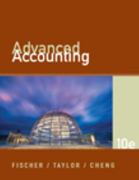Question
HW -chap 1 Government & NOT-FOR-PROFIT Accounting, Michael H. Granof & Saleha B. Khumawala C&P 8th Ed. 1- Budgeting practices that satisfy cash requirements may
HW -chap 1
Government & NOT-FOR-PROFIT Accounting, Michael H. Granof & Saleha B. Khumawala C&P 8th Ed.
1- Budgeting practices that satisfy cash requirements may not promote interperiod equity.
The Burnet County Road Authority was established as a separate government to maintain county highways. The road authority was granted statutory power to impose property taxes on county residents to cover its costs, but it is required to balance its budget, which must be prepared on a cash basis. In its first year of operations, it engaged in the following transactions, all of which were consistent with its legally adopted cash-based budget:
1. Purchased $10 million of equipment, all of which had an anticipated useful life of 10 years. To finance the acquisition, the authority issued $10 million in 10-year term bonds (i.e., bonds that mature in 10 years)
2. Incurred wages, salaries, and other operating costs, all paid in cash, of $6 million
3. Paid interest of $0.5 million on the bonds
4. Purchased $0.9 million of additional equipment, paying for it in cash; this equipment had a useful life of only three years
a. The authority's governing board levies property taxes at rates that will be just sufficient to balance the authority's budget. What amount of tax revenue will it be required to collect?
b. Assume that in the authority's second year of operations, it incurs the same costs, except that it purchases no new equipment. What amount of tax revenue will it be required to collect?
c. Make the same assumption as to the tenth year when it will have to repay the bonds. What amount of tax revenue will it be required to collect?
d. Comment on the extent to which the authority's budgeting and taxing policies promote interperiod equity. What changes would you recommend?
2 - The dual objectives of assessing interperiod equity and ensuring budgetary compliance may necessitate different accounting practices.
A city engages in the transactions that follow. For each transaction, indicate the amount of revenue or expenditure that it should report in 2020. Assume first that the main objective of the financial statements is to enable users to assess budgetary compliance. Then calculate the amounts, assuming that the main objective is to assess interperiod equity. The city prepares its budget on a "modified" cash basis (that is, it expands the definition of cash to include short-term marketable securities), and its fiscal year ends on December 31.
1. Employees earned $128,000 in salaries and wages for the last five days in December 2020. They were paid on January 5, 2021.
2. A consulting actuary calculated that per an accepted actuarial cost method, the city should contribute $225,000 to its firefighters' pension fund for benefits earned in 2020. However, the city contributed only $170,000, the amount budgeted at the start of the year.
3. The city acquired three police cars for $35,000 cash each. The vehicles are expected to last for three years.
4. On December 1, 2020, the city invested $99,000 in short-term commercial paper (promissory notes). The notes matured on January 1, 2021. The city received $100,000. The $1,000 difference between the two amounts represents the city's return (interest) on the investment.
5. On January 3, 2020, the city acquired a new $10 million office building, financing it with 25-year serial bonds. The bonds are to be repaid evenly over the period they are outstandingthat is, $400,000 per year. The useful life of the building is 25 years.
6. On January 4, 2020, the city acquired another $10 million office building, financing this facility with 25-year term bonds. These bonds will be repaid entirely when they mature on January 1, 2042. The useful life of this building is also 25 years.
7. City restaurants are required to pay a $1,200 annual license fee, the proceeds of which the city uses to fund its restaurant inspection program. The license covers the period July 1 through June 30. In 2020, the city collected $120,000 in fees for the license period beginning July 1, 2020.
8. The city borrowed $300,000 in November 2020 to cover a temporary shortage of cash. It expects to repay the loan in February 2021.
Step by Step Solution
There are 3 Steps involved in it
Step: 1

Get Instant Access to Expert-Tailored Solutions
See step-by-step solutions with expert insights and AI powered tools for academic success
Step: 2

Step: 3

Ace Your Homework with AI
Get the answers you need in no time with our AI-driven, step-by-step assistance
Get Started


